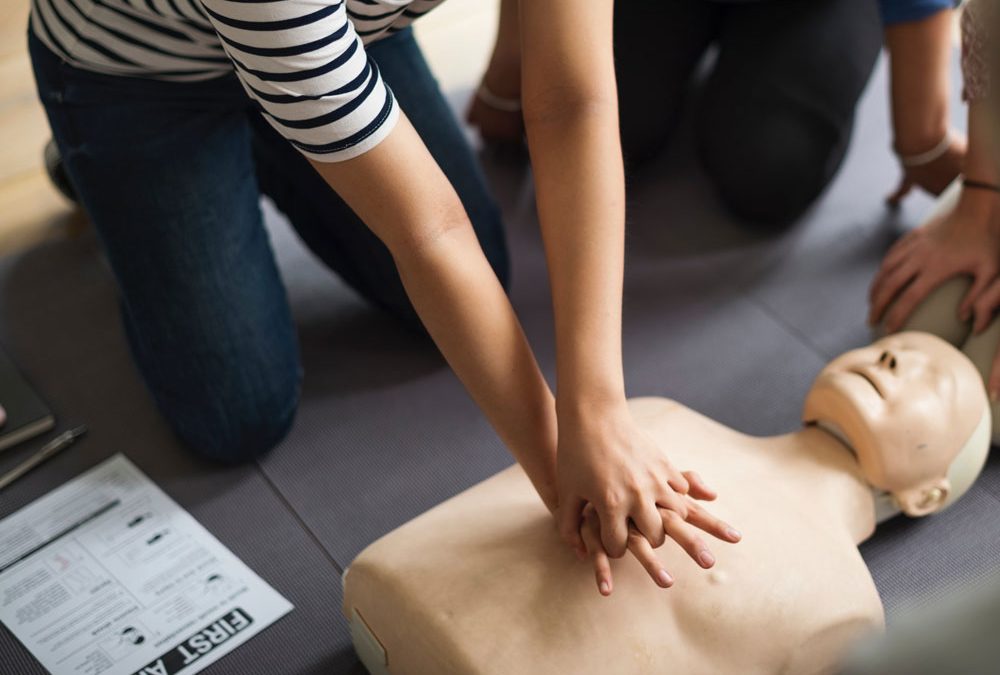The recent COVID-19 outbreak has generated many questions and concerns about potential exposure during CPR administration. The best protection from infection is to follow the recommended procedures and guidance highlighted in the FAQs below.
Q: Can I get COVID-19 from performing CPR?
A: Yes, you can get COVID-19 from performing mouth-to-mouth CPR. We strongly advise anyone in the community to do COMPRESSION- ONLY CPR. Studies have shown that compression-only CPR in adults may be as effective as combined rescue breaths and chest compression in the first few minutes of cardiac arrest. It is still important to call 112 or 999 and apply an AED (Automated External Defibrillator) as normal.
It is at your discretion to perform or not to perform mouth-to-mouth on a loved one or family member. If you choose to perform breaths, it is recommended you use a barrier device, such as a pocket mask or face shield, to help protect yourself.
If you choose to perform Compression-Only CPR, first call 112 or 999 and then push hard and fast in the centre of the person’s chest, on the lower half of breast bone, until advanced help arrives. If you think the person may have COVID-19, please state your concerns to the emergency response dispatcher so those who respond can be aware of the potential for COVID-19 transmission.
Q: Should I still do the breaths for CPR in a suspected/confirmed COVID-19 case?
A: In a suspected or confirmed COVID-19 case use compression-only CPR and apply an AED as soon as possible.
For a child or an infant, the cause of the heart stopping is likely to be due to a respiratory issue, so breaths are really important. Most children or infants are provided CPR by a family member or friend. Consider performing compressions and breaths, especially if you know the child/infant. If you do not feel comfortable giving breaths, or are concerned for COVID-19, you can consider only performing compression CPR and apply the AED as normal until help arrives.
Q: Can I still use an AED?
A: Yes. Early AED use is still very important. AED pads can be placed on the person’s chest as directed by the AED prompts. Use the AED as directed. There are no additional directions needed for coronavirus. Clean the AED surface after use with simple disinfectant to kill the virus, following the manufacturer’s guidelines. Protect yourself and others by wearing gloves when cleaning, and then washing your hands with soap and water, or using an alcohol-based hand sanitizer. Avoid touching your face (e.g., eyes, mouth, or nose). (Source: AHA, accessed 03/04/2020) Follow HSE guidelines on hand washing here.
Q: After performing resuscitation - are there any precautions I should take?
A: After performing resuscitation, individuals should wash their hands thoroughly with soap and water for a minimum of 20 seconds; alcohol-based hand gel is a convenient alternative. See HSE guidelines on hand washing here
Q: I have given mouth-to-mouth. What should I do?
A: If you have given mouth-to-mouth resuscitation, there are no additional actions to be taken other than to monitor yourself for symptoms of possible COVID-19 over the following 14 days. Should you develop such symptoms, please contact your GP.
For the latest information from the HSE on COVID-19, please visit https://www2.hse.ie/coronavirus/


Recent Comments